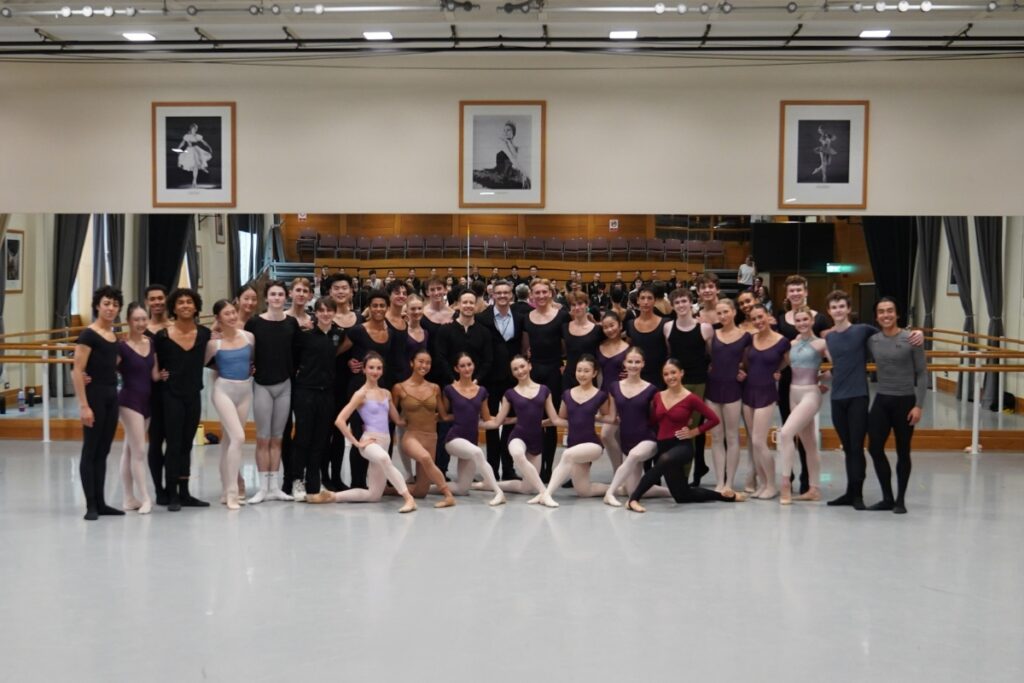The art of acting with James Hay, First Soloist with The Royal Ballet
At the School, we understand the importance of empowering and equipping our students with the tools for their careers as performers.
Dancers are also storytellers, and acting forms an essential part of a dancer’s career. From classical ballets to abstract works, all choreography has meaning, and dancers play a pivotal role in driving the narrative and conveying emotion to audiences.
This year, our Upper School students have been developing their acting toolkit, working alongside acting coach and alumna of the School, Emma Flett. Emma also coaches professional dancers, including James Hay, helping them to ‘work on a tapestry of exercises that together make the threads of how you create a character.’
James joined Emma at Upper School earlier this week, taking part in a Q&A on his approach to tackling roles with The Royal Ballet.
Building a character from the ground up
James Hay graduated from The Royal Ballet School in 2008, joining The Royal Ballet with a wealth of accomplishments to his name: the 2006 Young British Dancer of the Year, the 2007 Lynn Seymour Award winner, the 2007 Prix de Lausanne prize winner, and the Dame Ninette de Valois Most Outstanding Graduate.
With the Company, James has performed a myriad of roles and repertoire, from Cinderella and Don Quixote to Manon and ‘Still Life’ at the Penguin Café. He was promoted to First Artist in 2011, Soloist in 2012, and First Soloist in 2015.
James and Emma answered questions from students, eager to hear about James’ techniques used to embody a range of roles when performing repertoire with The Royal Ballet:
I’ve been dancing with the company for 16 years and have done a lot of classical work. In the last year, I’ve started to explore the character role side of my abilities. I’m starting to find that I enjoy the process; I love creating these characters and having fun playing with them.
James explained his motivation for working with Emma in helping him inhabit a character:
We often come to a character in a ballet, and there’s not much to go on in terms of direction. We know what the steps are, we might know what the name of the character is, we might know what their journey is, but everything else in between is sort of up to you to decide. I was looking to develop more confidence in creating characters for myself.
I hoped to gain a deeper understanding of what it takes to build a character from the ground up and find confidence in the preparation work to translate that into my performances on stage.
It’s all in the preparation
The preparation that I’ve done has helped me experiment with every single performance; it gave me the confidence to do that.
Having recently finished performing the comedic and dandified role of Gamache in Carlos Acosta’s Don Quixote, where he received great praise for his characterisation, James shared his process. He placed emphasis on creativity, taking responsibility, and using the tools and techniques students explored in their workshop:
First of all, how do I formulate who this character is? How do I see them? I’ve seen them perform so many other times, and is that the right way for me to go about that? How can I approach this through my vision and make what he [Gamache] says interesting for myself and others? Once I grounded myself in that character and knew who that person was, the rest fell into place.
Thank you, Emma, for your commitment to improving our students’ acting skills, and to James for sharing your valuable insights.





